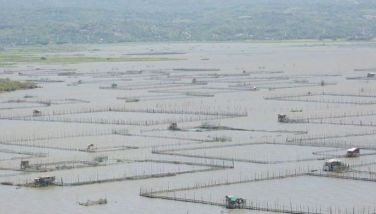BFP steps up quake, fire drills
MANILA, Philippines - The Bureau of Fire Protection (BFP) is stepping up its earthquake and fire drills in an effort to strengthen the agency’s capabilities in cases of emergency such as the massive quake and tsunami that struck northeastern Japan last Friday.
Chief Superintendent Santiago Laguna, director of the BFP-National Capital Region (NCR), said they have started drawing up plans to reinforce their capacity to respond to disasters.
“We will try to strengthen our capabilities and educate the public more about emergency measures,” said Laguna.
The drills will be done in coordination with the Office of the Civil Defense. BFP personnel involved in search, rescue and emergency medical service will also be given a refresher training.
But Laguna said the BFP has been conducting simultaneous quarterly fire and earthquake drills as part of disaster preparedness nationwide.
Superintendent Renato Marcial of the BFP-Bicol also said that the bureau has ordered a review of the contingency plans and response protocols during disasters.
On the other hand, a BFP official, who spoke on condition of anonymity, said the Japan quake and tsunami should serve as an eye-opener to the government about the need to prioritize procurement of rescue-related equipment.
The BFP official said after the earthquake in Haiti last year, the bureau requested for more rescue-related equipment but higher authorities had not taken any action on the matter.
“We will try to ask for additional equipment again,” the official said. “We are hopeful that the national government will support us this time.”
Meantime, the National Disaster Risk Reduction and Management Council (NDRRMC) will coordinate with other state agencies and local governments to ensure that structures in the country can withstand earthquakes.
NDRRMC executive officer Benito Ramos said they are continuously communicating with local governments so that no new buildings would rise in quake-prone areas.
“We are coordinating with the DILG (Department of the Interior and Local Government) because they can convince people to evacuate. We will coordinate with building officials so they won’t issue permits to those who want to build structures in vulnerable areas,” Ramos told radio dzBB.
Ramos made the statement after the Japan International Cooperation Agency published a study stating that several buildings in Metro Manila would collapse in a 7.2 magnitude tremor.
The study, which was presented to the Senate national defense committee last month, said Metro Manila was not prepared to deal with a 7.2-magnitude earthquake in terms of resources and given the old structures surrounding it. The study said such quake would result in major fires in Manila, Pasig and Quezon City.
Ramos said the public works department is now retrofitting existing structures to make them more resilient.
“What we need here is political will. Many will be affected if an earthquake affects areas like those on the Marikina fault line,” Ramos said.
He said some buildings in the country date back to the 1930s and are therefore not compliant with existing building standards.
The NDRRMC official added that there are ethnic groups who are used to living in houses near water bodies.
“In Jolo, the houses of Badjaos are located near the sea. That’s part of their culture. We are urging local officials especially barangay captains to discourage people from building houses near the sea especially those facing the Pacific Ocean,” Ramos said.
Earlier, Ramos claimed that high-rise structures in urban centers are designed to withstand tremors up to magnitude seven and are classified safe. He said the country’s high-rise residential areas and offices
are safer than buildings established after World War II.
Ramos said they are regularly conducting earthquake drills so people would know what to do in times of disaster.
He said barangay captains should conduct disaster preparedness drills and information drives since the national government cannot train all households.
Ramos said they are prepared to mitigate the impact of disasters but admitted that they lack the necessary equipment.
“Our counterparts in Japan have (advanced) equipment but they still recorded casualties. We are conducting drills but I cannot guarantee that we will have a zero casualty. This is next to impossible,” he said.
Preparedness is the key
Lawmakers urged households and communities as well as local and national authorities to ensure preparedness for natural and man-made calamities at all levels.
Quezon City Rep. Winston Castelo, for his part, filed a resolution expressing the sympathies of the House of Representatives to the government and the people of Japan affected by the powerful earthquake.
Castelo and Cagayan Rep. Juan Ponce Enrile Jr. also called for greater disaster preparedness at all levels.
Castelo said the Japan earthquake and tsunami should serve as “a serious warning for our very government, both at the national and local levels, to review, reassess, and reevaluate our disaster preparedness program.”
“I certainly think that if we are aware and are prepared against the occurrence of any natural disaster, this by itself would have solved half of our worries,” he said. - With Paolo Romero, Alexis Romero
- Latest
- Trending



























